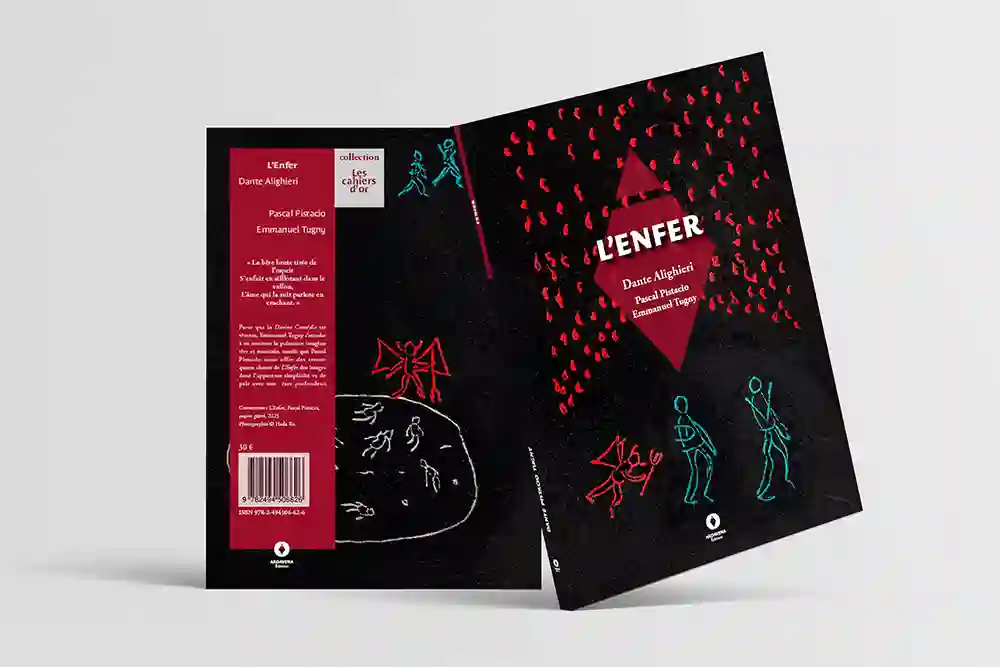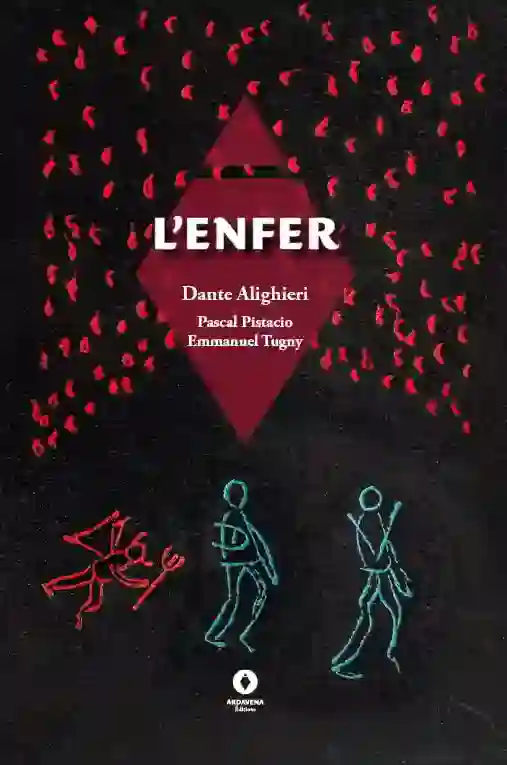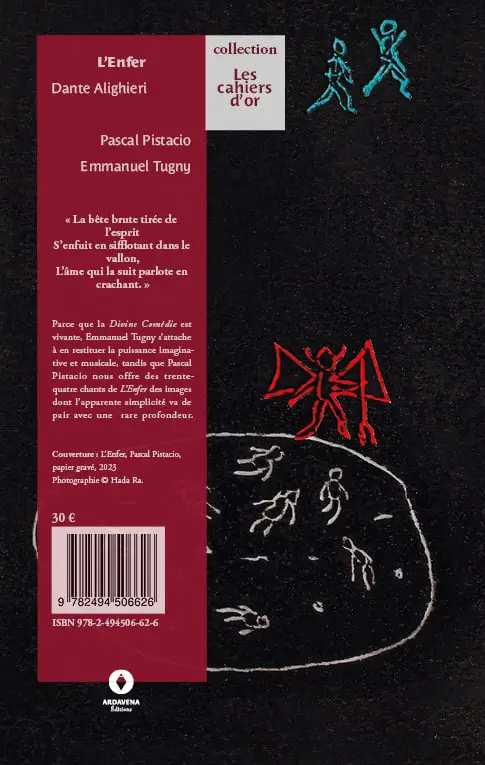INFERNO, DANTE ALIGHIERI

March 21, 2024 Expected release
Illustration of the XXXIV chants Pascal Pistacio
Translation Emmanuel Tugny
Ardavena éditions (Collection Les Cahiers d’or)
ardavena.com/les-
www.fnac.com/e612175/Ardavena
To dare to take on the graphic assault of Dante Alighieri’s sublime and masterly work, you have to forget modesty and pride. Beauty and vibrancy are the only things that count.
The miracle of this journey – The Comedy, called divine – is the encounters, the discoveries… another genius, Botticelli.
In the course of my research, I learnt that to produce ‘his’ Comedy, he used a silver-tipped stylus to engrave the 100 parchments and then add colours.
We also meet Emmanuel Tugny, an incandescent lover of the Florentine genius, who makes a luminous, chiselled contribution by translating the tercets that mirror the engraved papers.
Emmanuel Tugny, with the Ardavena publishing house, is at the initiative of this book.

Book cover Inferno, Dante Alighieri, Pascal Pistacio, Emmanuel Tugny
Ardavena éditions
Format 27 x 19 cm

Chant I
Paper engraved with a stylus, dry pastel, 40 x 30 cm
Photo by Hada Ra

About engraved paper
Engraving, architectural term.
Name given to any shallow work of sculpture.
This is what is meant by engraved paper.
As a sculptor, I make a furrow in the paper with a stylus with a rounded tip, so as not to pierce it.
The gesture should be firm and gentle. I sculpt blind, which means that I cut directly into the white or coloured surface and only discover the engraved “line” once I have applied the dry pastel to the surface.
The furrow, the drawing, appears to me once this stage has been completed. The colour applied reveals the colour in the furrow. There is no room for repentance, and as in life, surprises abound.
It’s paper and chance that do the dancing.
The particularity of this technique, its strength and beauty, is that it gives an impression of relief, as with sculpture (in the classical sense).
When you move around the surface, which appears flat, the light that vibrates in the incisions in the paper, with the interplay of shapes and colours, gives you a feeling of animation, of life.
Dry pastel, a volatile and capricious material, is like pollen: every last grain sticks.
I work with my fingers and massage the paper, allowing the colour to penetrate. This practice is sensual.
By using the rudimentary means of this technique, I feel an organic fraternity with our ancestors who engraved caves and rock faces. Emotion when, in Canto XX of Inferno, near Mantua where Virgil was born, Dante speaks of Valcamonica, a place of rock art treasures!
The Comedy, called divine
The story opens on 8 April 1300. A dark forest and a sinuous road. Full moon and sunrise, almost an eclipse. Dante begins his journey of initiation.
Exiled from Florence, Dante, at the mid-point of his life, 35, is in the throes of self-doubt.
What will he do with him? He comes across three wild beasts (panther, lion and she-wolf) that symbolise modern evils: lust, pride and greed.
These animals also symbolise the political and military powers in place in the 14th century, which were vying to dominate Florence. The Holy German Empire, Venice, Rome and papal power.
He calls on a Master, Virgil, to guide him on his quest. Virgil comes to his rescue and opens the way for him to embark on a journey of initiation, in order to rediscover Love in the guise of the deceased Beatrice who lives in his heart… Crossing the Inferno is the first stage in this journey of discovery.
Pascal Pistacio
